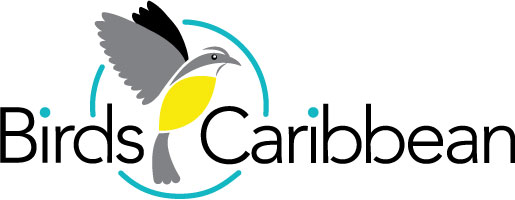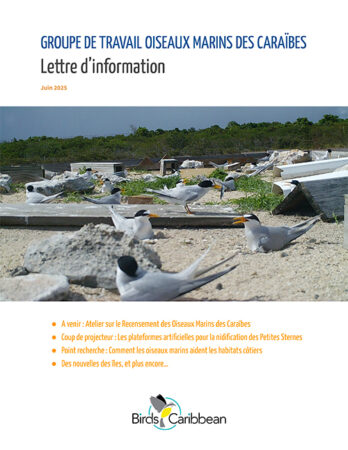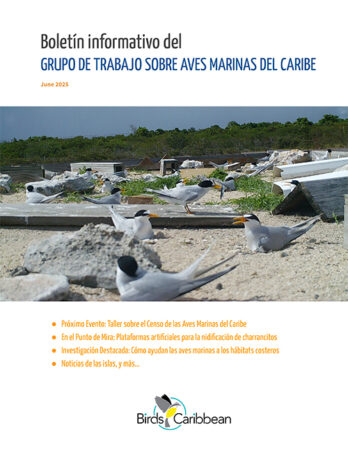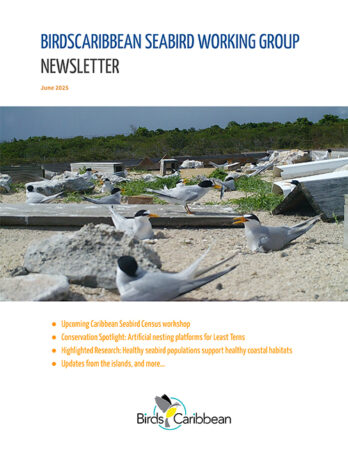The annual BirdsCaribbean Seabird Working Group (SWG) newsletter is now available! Catch up on the latest research, conservation, restoration, and education projects happening across the Caribbean—in English, Spanish, and French!
In this issue of the SWG newsletter, learn about seabird monitoring in the Turks and Caicos Islands; plans to study the foraging movements and mercury contamination of terns in Cuba; how a sailboat expedition led to a new marine protected area in the Dominican Republic; how researchers in Puerto Rico are attracting nesting seabirds back to Desecheo Island; efforts to rally the community to monitor and conserve seabird colonies in the Grenadines, and more.
Dive into Seabird IBAs
The 2-part webinar series “Important Bird Areas/Key Biodiversity Areas for Caribbean Seabirds” was well attended and received lively engagement from our seabird-loving community. The SWG is extremely grateful to the knowledgeable and inspiring presenters. We look forward to collaborating on more informative webinars that help us grow our network of designated IBAs/KBAs for Caribbean seabird conservation.
These webinars can be viewed on the BirdsCaribbean YouTube channel:
Seabird Resilience Post-Beryl
On July 1, 2024, a Category 5 Hurricane Beryl tore through the Grenadines destroying homes, disrupting essential services, and erasing invaluable cultural heritage. Seabird Guardian, Vaughan Thomas, recounts his monitoring trips, months later, to the offshore islands that serve as important nesting sites for a variety of seabirds. The immediate impact was jarring; entire islands reduced to exposed rock and nearby coral reefs that serve as nurseries for fishes that seabirds feed on were wiped out. Zero nests. Zero chicks. But Vaughan kept returning, and what he discovered is a powerful testament to nature’s remarkable ability to renew itself. Check out the newsletter for photos and more on Vaughan’s story of seabird resilience in the face of disaster.
Seabird Poop Powers Mangrove and Coral Comebacks
And as seabirds return, so does something remarkable: their poop! Seabird droppings, also known as guano, are packed with nutrients that help fertilize coastal ecosystems. Recent research shows that this natural fertilizer boosts the health of mangroves and even helps revive climate-stressed coral reefs. Learn more about these processes in the ‘Highlighted Research’ section of the newsletter.
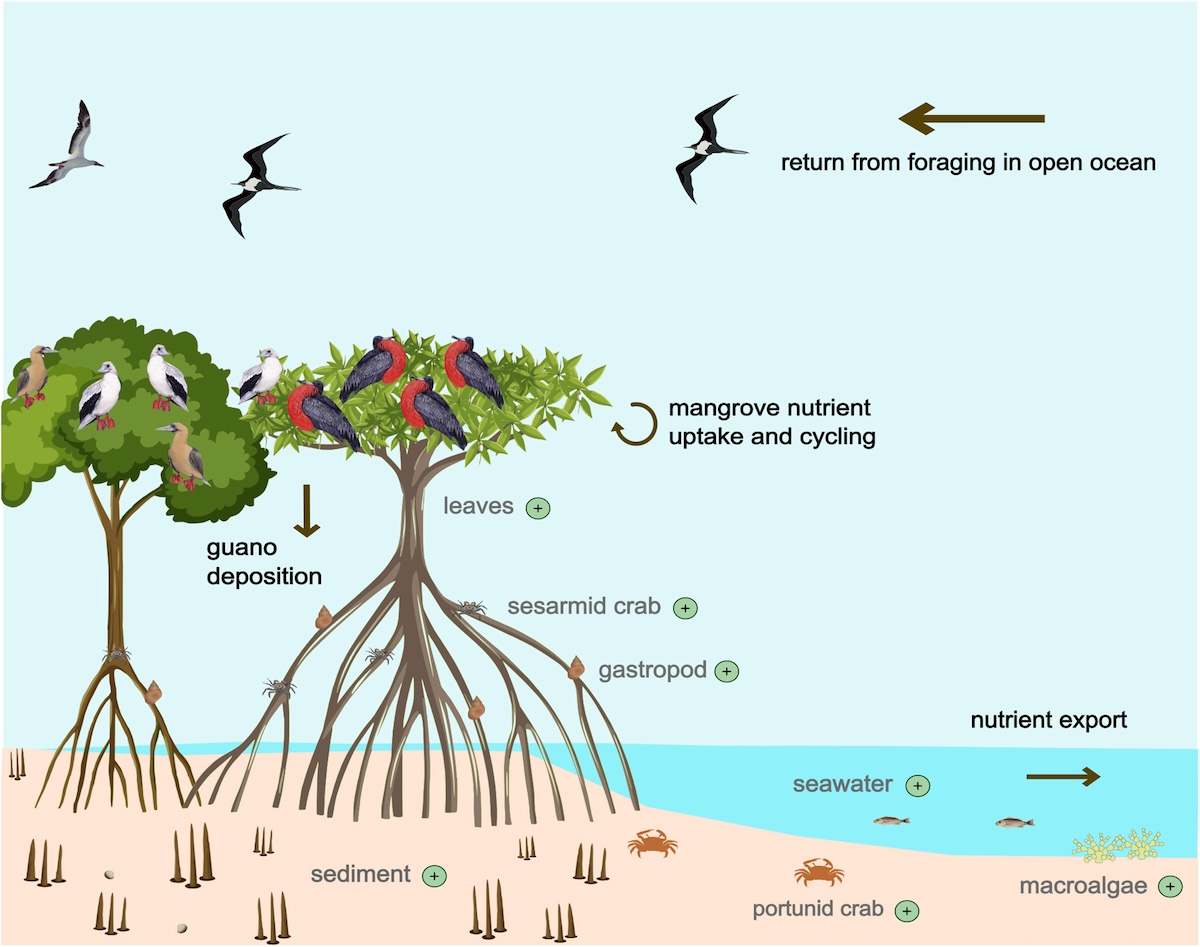
Nesting Platforms for Imperilled Least Terns
With natural nesting grounds under pressure from development, predators, and rising seas, Least Terns are getting a helping hand from creative conservationists. From rooftop nests to floating rafts, conservationists in the Caribbean are stepping up with innovative solutions to protect Least Tern colonies. In this conservation spotlight, we learn how teams are testing out platforms and rafts to give Least Terns a safer place to raise their chicks. Spoiler alert! The results are hopeful. Check this issue of the SWG newsletter to learn how smart design is helping these seabirds thrive in a changing world.
Interested in connecting with the SWG and its members? Visit the Seabird Working Group webpages and our Seabirds Resources page to access these resources. Please take advantage of the many avenues for communication described in the newsletter, including the SWG Facebook group. If you have seabird news to share, let us know! We would love to feature your work in the next issue!
Enjoy!
-Yvan, Rhiannon and Ann
Click on the Flipbooks below to read and/or download this newsletter along with past issues.
Click on the individual images below to download a PDF of the newsletter in your preferred language.
